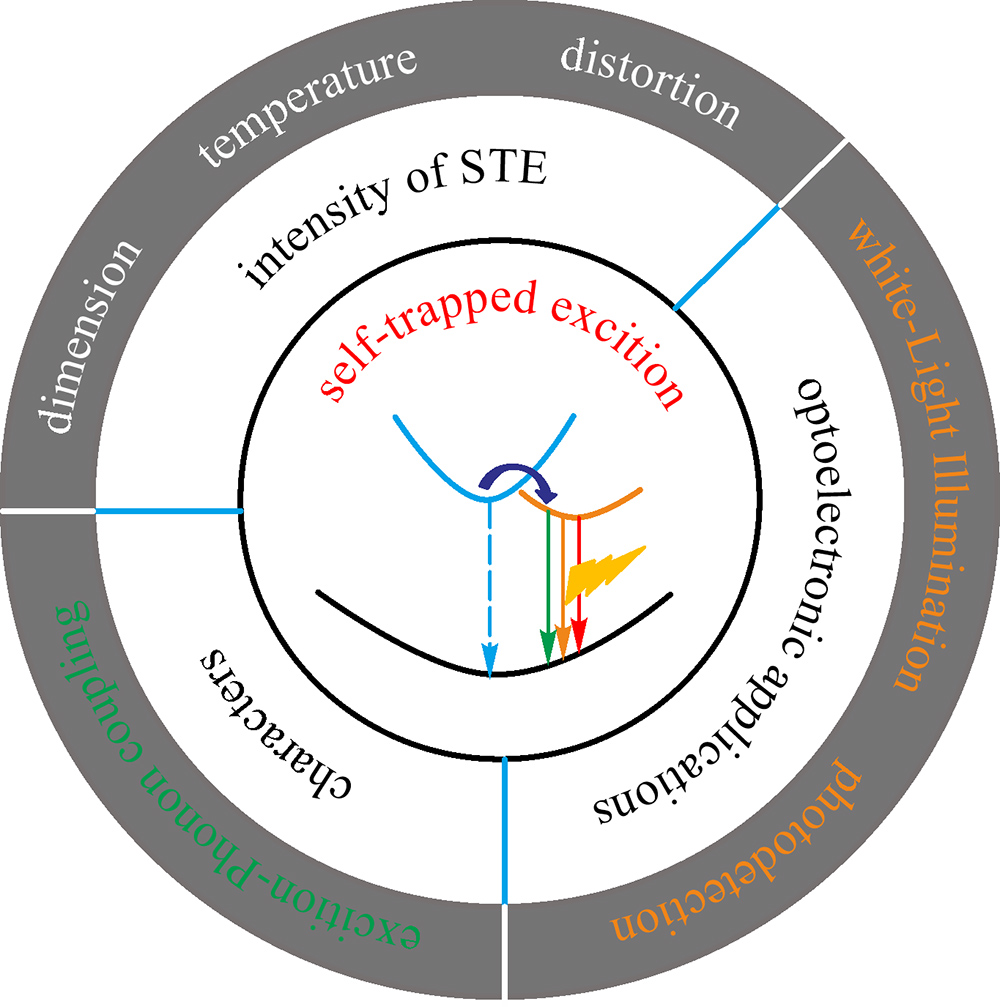The general formula of 2D perovskites is
R2An−1MnX3n+1, where
R is an organic spacer cation,
A is an organic cation,
M is a divalent metal, and
X is a halide anion. The structure of 2D perovskites can be regarded as an organic chain inserting into three-dimensional (3D) perovskites to serve as a spacer layer (Fig. 1(a)) [
7,
31]. Thus, 2D perovskites process a natural quantum-well structure, and the width of the quantum well can be tuned by changing the inorganic layer number,
n. With the increase of
n, the bandgap of 2D perovskites shows a redshift, which is a result of reduced quantum confinement effect [
15]. Taking (C
4H
9NH
3)
2(CH
3NH
3)
n−1Pb
nI
3n+1 emission spectra as an example (Fig. 1(b)), we can observe a clear redshift of peak position with increasing
n [
32]. Only one emission peak is present at room temperature, whereas multiple emission peaks can be observed at low temperatures [
32,
33]. For
n = 1 perovskite, we can observe additional broadband emission peaks below the free exciton emission peak, and the intensity of the broadband emission peaks becomes weaker for
n > 2 perovskites; the reasons of which will be discussed in the following. The power-dependent emission intensity shows that the intensity of these broadband emission peaks linearly increases with the excitation intensity similar to that of free exciton emission (Fig. 1(d)), which indicates defects should not be the response to the broadband emission [
33,
34]. Thus, the broadband emission can be ascribed to the localized exciton states below the free excitons. Yu et al. [
35] measured the fluorescence lifetime of free excitons and localized excitons in 2D perovskite (PEA)
2PbI
4 and found a much longer lifetime for the broadband emissions (Fig. 1(e)). Besides, considering the large Stokes shift, these broadband emissions are similar to the STEs emission in alkali halides and organic molecular crystals, which are due to the strong electron–phonon interaction in the deformable lattice with distortion [
28,
35]. According to the different origination of lattice distortion, STEs can be divided into intrinsic and extrinsic. Intrinsic STEs exist in lattice without defects, and self-trapped states can be regarded as excited states. Once the excitation is removed, these excited states disappear. In terms of extrinsic STEs, permanent defects are required to nucleate the STEs. However, these defects do not induce any additional absorption onsets except the broadband emission with a large Stock shift [
29].









